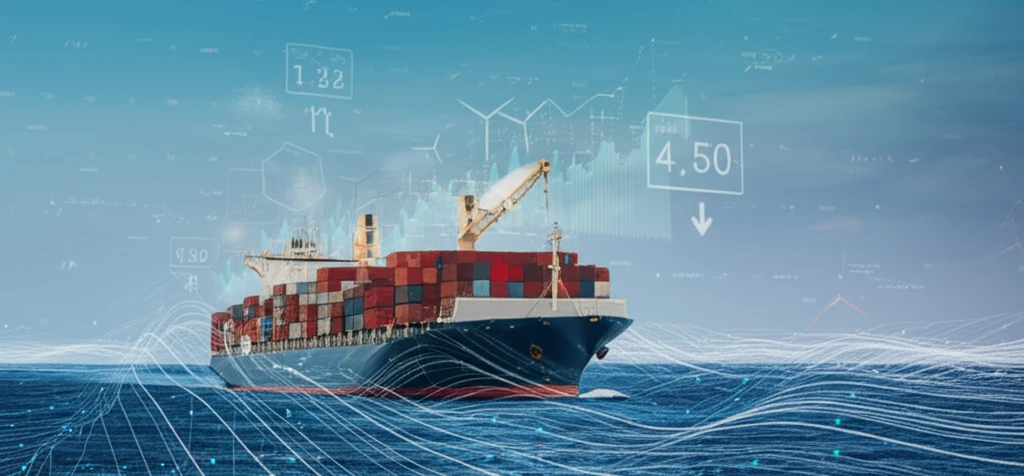
Sailing Smarter: How a Novel Model Can Boost Ship Energy Efficiency
"Discover how a cutting-edge ship energy efficiency model, incorporating random environmental factors, promises a greener and more profitable maritime future."
The shipping industry, responsible for transporting over 80% of international trade, faces increasing pressure to reduce its environmental impact. With the Paris Agreement setting ambitious goals for greenhouse gas (GHG) emission reductions, the maritime sector must innovate to minimize its carbon footprint. Energy efficiency isn't just an environmental imperative, it's also a key factor in improving the economic competitiveness of shipping companies.
Traditional methods of assessing ship energy efficiency often fall short by not fully accounting for the dynamic and unpredictable nature of real-world operating conditions. Factors like weather, sea state, and waterway depth can significantly impact a ship's fuel consumption and overall efficiency. To address this gap, a new ship energy efficiency model has been developed, incorporating random environmental parameters to provide a more accurate and reliable assessment.
This innovative model, tested on a 53,000-tonne bulk carrier, offers a promising approach to simulating ship energy efficiency under a variety of conditions. By considering factors like cargo loading, ship speed, and the impact of environmental variables, the model aims to provide valuable insights for ship managers seeking to optimize their operations and reduce emissions.
Decoding the Ship Energy Efficiency Model: What Factors Matter?

The model is built upon four core components: ship energy efficiency operational indicator (EEOI), ship fuel consumption, ship main engine power, and ship fluid dynamic resistance. By integrating these elements, the model provides a comprehensive view of a ship's energy performance. Data is gathered from onboard sensors, which provide real-time measurements of fuel consumption, shaft power, ship speed, and other relevant parameters.
- Ship Speed: The speed at which the ship travels significantly impacts fuel consumption and energy efficiency.
- Cargo Loading: The amount of cargo being transported affects the ship's draft and resistance, influencing energy requirements.
- Wind and Waves: These environmental factors can create additional resistance, increasing fuel consumption.
- Water Depth: Shallow water can increase a ship's resistance, requiring more power to maintain speed.
- Ocean Currents: Sailing with or against currents affects the ship's speed over ground and energy expenditure.
Setting Sail Towards a Greener Future
The development of this novel ship energy efficiency model represents a significant step towards a more sustainable maritime industry. By providing a more accurate and comprehensive assessment of ship performance, the model can help ship managers make informed decisions about optimizing their operations and reducing emissions. The model offers decision support for optimizing ship energy efficiency, promoting energy saving and emission reduction within the shipping industry. As the pressure to decarbonize the shipping industry continues to grow, tools like this will be essential for navigating the challenges and opportunities ahead.
